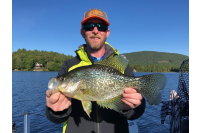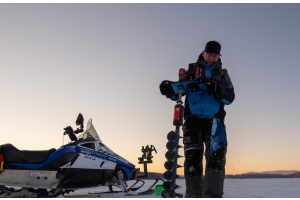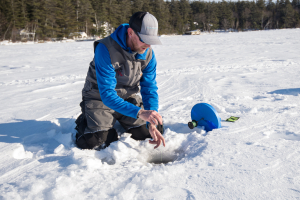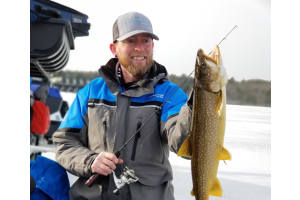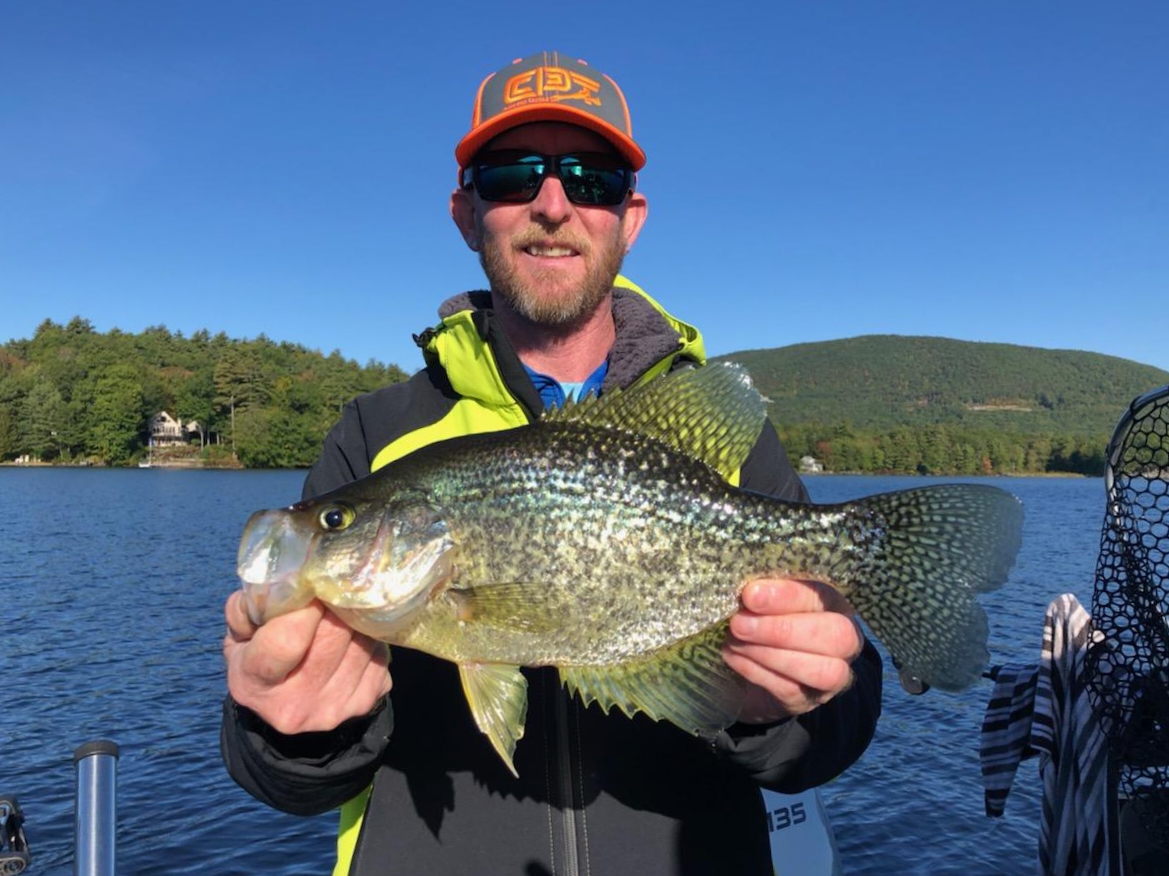
November is a month when many people have written off any type of fishing until things become a bit more solid, especially freshwater fishing. They hang up their rods and winterize their boats, thinking that fishing season is over because some seasons have closed. Then there are people like me who, despite all the amazing fishing opportunities spring and summer have to offer, always seem to have thoughts of fall fishing lingering somewhere in the back of our minds. In my opinion, fall offers some of the best fishing of the entire year. Warmwater species such as crappie respond predictably to falling water temperatures and fewer daylight hours by feeding aggressively. With a little ambition and a few tricks it doesn’t take long to fill a stringer.
Fishing in November can be difficult some years, especially in the early mornings when crappie bite best, because it can be tough to stay warm. Early morning temperatures can sometimes approach the freezing point, making extra layers of clothing. fingerless gloves and a Buddy Heater your best friend. After all, you’re trying to enjoy yourself and being cold takes the fun out of fishing for a lot of anglers. Just remember, crappie do not respond well to sudden changes in temperature. If the temperature drops drastically overnight it will likely affect the crappie bite and make the fishing slow. A sudden overnight drop in temperature may make sitting in a deer stand a more productive idea.
What defines deep water is relative since all lakes and ponds are different. In a body of water that isn’t very deep, yet still has crappie, find the deepest part and that will be your deep basin. The ideal situation is a water body that has 30’ to 40’ distinct deep basins. On a chart the basins will look like a bowl or depression. These types of basins will hold crappie in and keep them from straying too far, making it easier to stay on schools of fish. You will usually find fish suspended over these deep basins 12 to 20 feet down, but that may change as the water temperature drops further. If you have a Vexilar sonar flasher or other fish finder, you can use it to determine the depth of fish and the location of your lure. Because crappie usually feed from below their prey if your jig is just below a school they might miss it. Knowing their depth allows you to adjust yours and helps you pull more fish over the side of the boat, or kayak in my case.
One of my favorite lures for fall crappie is a 1/8 tungsten jig head with a Bobby Garland Baby Shad Swim’R. The Baby Shad Swim’R is a soft plastic paddle tail with a whip-like tail that bounces when jigged and has an excellent swimming action if you want to cast and retrieve it. One great technique on windy days is to drift without jigging the lure. This keeps the lure at a consistent depth and gives it the appearance of a swim-bait. Remember to position your bait above the school for greater numbers of fish.
Crappie are hungry in November. They know that food, light, and oxygen are going to become harder to come by as the seasons progress and the temperatures cool. An extra layer or two of clothing can make all the difference, and after you catch a few fish, it’s doubtful you will even notice the temperature. If that doesn’t work, a few bites of fried crappie fillets on a crisp fall evening sure will.





